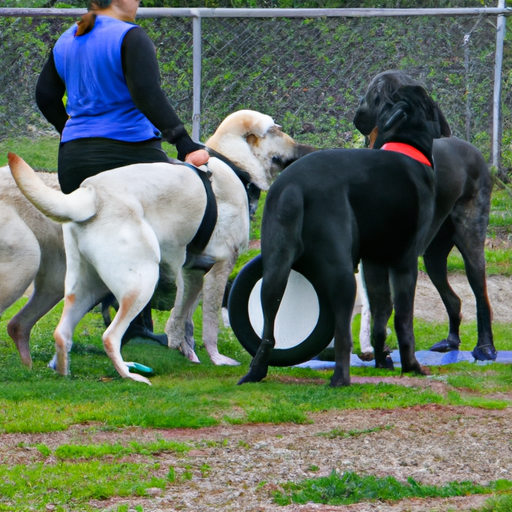As a caregiver, you understand the immense value a service dog can bring to those living with disabilities. Providing comfort, companionship, and practical assistance, these dogs are more than pets. They are life-changers. However, training a service dog is not an easy task. It requires time, patience, consistency, and knowledge. This article will explore where to train service dogs, to ensure they can effectively assist those in need.
- Table of Contents
- Introduction
- Importance of Training
- Professional Training Schools
- Home Training
- Community-based Training Programs
- Online Training Resources
-
Frequently Asked Questions
-
Key Takeaways
- Professional training schools are a popular choice for service dog training, but they can be costly.
- You can train a service dog at home with the right resources.
- Community-based programs offer an affordable alternative to professional training schools.
- Online resources can supplement in-person training efforts.
Importance of Training
Service dogs perform a wide range of tasks, from guiding the visually impaired to alerting individuals with epilepsy to an impending seizure. Given the complexity of these tasks, it’s crucial that service dogs receive proper training. This training not only ensures that the dog can perform its tasks effectively, but it also ensures the safety and wellbeing of the handler.
Professional Training Schools
Professional training schools, such as the renowned Guide Dogs for the Blind, offer comprehensive service dog training programs. These schools use scientifically-proven methods to train dogs to assist with a variety of disabilities. However, these programs can be expensive and may require the dog to stay at the facility for an extended period.
One of our articles on OneTopDog provides more in-depth information about professional dog training schools.
Home Training
Training a service dog at home is a feasible option if you have the time, patience, and resources. It allows for a deeper bonding experience between the handler and the dog. However, it’s essential to note that home training requires a significant time commitment and a good understanding of dog behavior.
For more information on home training, check out our article about DIY Dog Training at OneTopDog.
Community-Based Training Programs
Community-based training programs are often more affordable than professional training schools, and they offer the added benefit of socializing your dog with other dogs and people. These programs often involve group classes and one-on-one sessions with a trainer.
Our guide on Community Dog Training Programs provides more information about what to expect from these training options.
Online Training Resources
Online training resources like Dog Training by K9-1 offer a wealth of information for those interested in training their service dog themselves. These resources often include video tutorials, forums for questions and discussions, and access to expert advice.
| Online Training Resource | What They Offer |
|---|---|
| Dog Training by K9-1 | Video tutorials, forums, expert advice |
| OneTopDog | Articles, tips, how-tos |
Frequently Asked Questions
- Can any dog be trained as a service dog?
- Not all dogs are suited to be service dogs. They must be physically capable of performing tasks and should have a calm, responsive, and trainable temperament.
- How long does it take to train a service dog?
- Training a service dog typically takes 1-2 years, depending on the tasks the dog needs to learn and the dog’s learning speed.
- Can I train a service dog myself?
- Yes, you can train a service dog yourself. However, it’s important to remember that service dogs require advanced training beyond basic obedience.
In conclusion, there are many options available for training a service dog. The best choice depends on your individual circumstances and the needs of the person the dog will be assisting. Whether you choose a professional training school, home training, community-based programs, or online resources, what matters most is the quality of the training and the wellbeing of the dog and handler.



